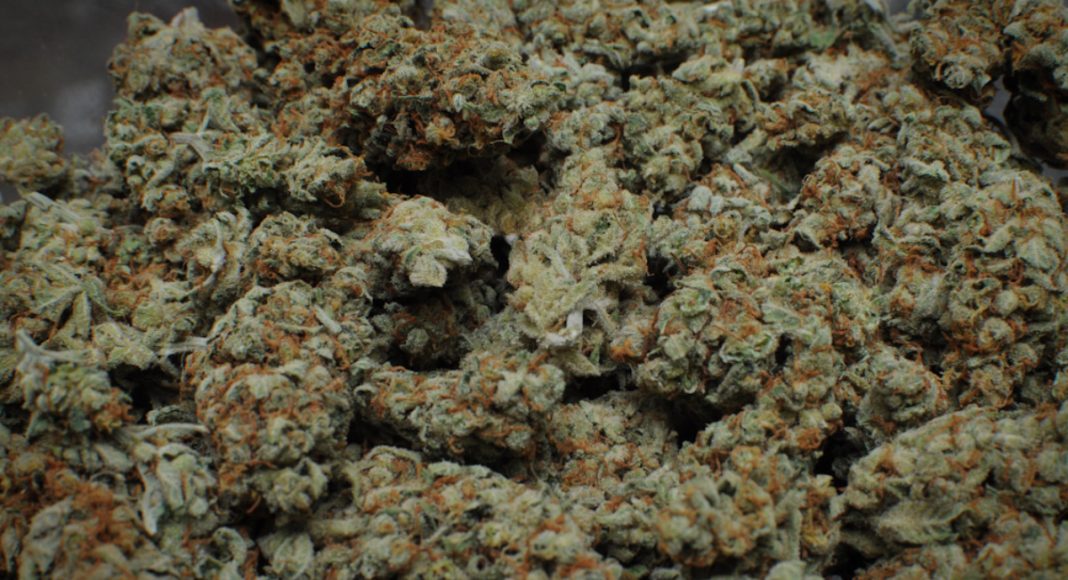There has been a lot of buzz in the cannabis industry lately about mold. The threat of mold is the primary, invasive scare tactic used to drive black market cannabis consumers into the legalized market. Obviously, nobody wants mold in their weed, but how much of a threat really is it? Is it worth paying up to four times as much for marijuana that has been lab tested? Can marijuana get moldy after it leaves the lab?
Mold is a part of life on this planet. It is everywhere. There is probably microscopic mold growing on some part of your body or visible mold on expiring fruit in your fridge at this moment. Spoiled veggies are easy to spot and discard. Anyone might have accidentally eaten a piece of moldy bread in your lifetime, and it did not kill them. One of your crusty roommates might have even removed the moldy part and eaten around it. Then there is black mold – the deathly scary kind. So what kind of mold is in your weed and how bad is it?
Have you ever coughed your brains out after a bong hit? A “kif cough” can be an indication that you inhaled too deeply or held the smoke in for too long. However, lingering chest pains can also be a sign of potentially contaminated weed, not just mold, but perhaps chemical-laden pesticides and fertilizers; which are the real danger.
-
Related Story: Cannabis 101: How To Tell If Your Marijuana Is Moldy
Scott’s Miracle-Gro is not organic, and they have delved deeply into the weed market, especially in California. Miracle Gro’s ingredients might not matter to someone growing tulips, but it is definitely not meant for consumption in any form.
According to Mike Leiberman of Urban Organic Farmer, “The majority of Miracle-Gro’s product line is filled with chemicals and synthetics. They do have some product that is organic and certified by OMRI. Scott’s, the parent company of Miracle-Gro, is in bed with Monsanto and are the exclusive agent of Round-Up. … It’s not just about being organic.”
The current antithesis of antiquated “reefer madness” is the marijuana mold madness. We are hearing executives say that compliant cannabis is the healthy thing and grey-market, Prop 215 cannabis is dangerous, while six months ago the story was the complete opposite.
R.J. Falcioni, CEO of outspoke.io agrees, “The mold issue is something of a marketing ploy and not always accurate because I have gone into dispensaries post-legalization and found powdery mildew in cannabis.”
There are definitely moisture issues with growing plants meant for consumption, especially in outdoor environments and in mixed site cultivation. It is going to be a growing problem with cannabis, no pun intended.
Sometimes, even the healthiest, purest harvests from ital, Jamaican Rastafarian-grown cannabis, for example, won’t be adequately cured because the humidity can cause mold can to accrue post-harvest.
“People are zeroing in on mold and honing it as a marketing ploy that ‘we test the cannabis, so it has to be better for you.’ It is a quagmire. The Labs are arbitrary, and the baseline is an arbitrary concept. There is no federal lab testing standard,” says Falcioni.
This situation occurred recently with Lowell Smokes. Cannabis flowers they purchased from one of their partner farms was tested by two separate labs, who couldn’t agree on its purity. The discrepancy ended with them conscientiously issuing a recall of two strains.
With the way cannabis is cultivated under the new licensing standards, the mixed light “hoop house” or greenhouse type of growing environment is desirable. The mold issue is being blamed more on off-the-grid farmers, than in highly invested operations.
“Even in highly stylized grows, sometimes there isn’t sufficient airflow in those tubes or tunnels which can create bud rot or mold,” says Falcioni. “
Now that pesticides are illegal, and use of them prohibits the bud from being sold, cannabis companies either accept a bud product with either mold or bud rod and process the cannabis into a concentrated form through the remediation process; or spray it with pesticides and hope it isn’t detected; or is organic enough to pass the testing process.
If a crop of bud fails the test, it can be processed, scrubbed and re-tested for compliance. Depending on how reliable a cannabis company is, the final option would be to for them to destroy the contaminated bud and accept the inventory loss, as was the case with Lowell Smokes.
Naturally, this drives up the cost of the final product, which is why Californians, in particular, are experiencing skyrocketing prices.
Either way, nobody wants contaminated cannabis in their body.
“I don’t think there are too many farmers left these days that spray their crops with Eagle or Avid, unless they are black market,” Falcioni says hopefully. “That came from a place of just not knowing the long-term effects on people’s health.”
There are also companies such as Trifecta, that make organic “pesticides” from other natural herbs that are a healthier alternative to crop dusting.
The long-term effects of pesticides on the human body can be just as detrimental as some types of mold, if not moreso. Mold thrives in moist environments, like lungs. Some adverse health issues that aggressive mold causes can be successfully treated with antifungal medication, while other mold infections can be fatal. Treating cancer is tenacious as well.
Have you gotten sick from moldy bud? Let us know!


